The Diakofto to Kalavrita railway and farewell to The Peloponnese
Dave the motorhome is once again sitting beside a beach, only this time he is on the Greek mainland having finally left the wonderful and amazing Peloponnese, and is just outside the town of Nafpaktos (N38.38718 E21.82095).
Last night we chatted with Brian and Mo over a smashing corned beef stew and a glass of Lidl’s Greek wine. They have some real tales to tell of their years motorhoming and before we knew it the time was gone 11pm. We said our farewell as we needed to have an early night as we had an early start in the morning to catch the train (not a phrase I’ve said in a long, long time!). Sleep was, for me, fitful as I waited for the alarm to beep. The wind picked up as the night progressed and the sound of the sea next to us grew louder as the waves increased in size. At 5.30 Brian and Mo’s alarm went off. I peeped through Dave’s curtains to check they weren’t under attack, but there wasn’t a soul in sight. A gust of wind rocked Dave, so I got up and closed his skylights and went back to bed – needless to say by the time the alarm did go off I was shattered.
With a feeling like we were getting up early for a holiday flight, we crept out of bed, dressed and drove to the car park near to Dhiakofto station (GPS: N38.19156, E22.19833), we wanted to be there early to ensure we could get a space. Parking up we had a bite to eat and packed some drinks and snacks in a bag. Charlie got walked, fed and kissed as we decided to leave him in Dave – he was still so sleepy his eyes were barely open. We walked across the car park and train track to the station and eyed up locomotive number 8003. This little engine had served this route for 70 years and has been preserved as a monument after travelling over two million kilometres, back and forth to Kalavrita. At the other end of the station a little blue train from 1954 stood idle by the tracks, was this to be our steed for the journey?
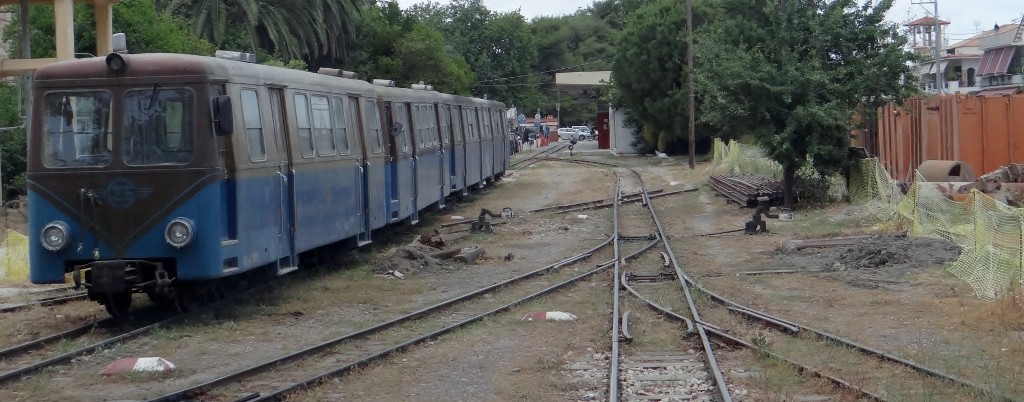 As we waited to see which steed we needed to climb aboard, we got talking to Stan and Fiona from Vancouver, and soon enough a more modern version of the little blue train arrived and we piled in. We’d been told by Brian and Mo to try and sit at the front right on the way up, but the conductor told us that the front carriage was full, so we went for the next best option, the small middle carriage. Just before we departed a school group arrived and took up their seats in the front carriage, a few other people boarded the rear carriage, so in it was just us in the middle. The train squeaked its way out of the station and soon we were going slowly upwards through lush green countryside, surrounded by dramatic cliffs.
As we waited to see which steed we needed to climb aboard, we got talking to Stan and Fiona from Vancouver, and soon enough a more modern version of the little blue train arrived and we piled in. We’d been told by Brian and Mo to try and sit at the front right on the way up, but the conductor told us that the front carriage was full, so we went for the next best option, the small middle carriage. Just before we departed a school group arrived and took up their seats in the front carriage, a few other people boarded the rear carriage, so in it was just us in the middle. The train squeaked its way out of the station and soon we were going slowly upwards through lush green countryside, surrounded by dramatic cliffs.
As we climbed the train clicked into the rack and pinion system to get it up the steeper slopes and the gorge we were in narrowed. Soon we were skirting around the rock face with the gushing torrents of a river below us. Jay was the first to open a window, then close it again as his Britishness took over (a large sign asked us not to open them as the carriage was air conditioned), but as the scenery grew increasingly dramatic the window was opened again. Then the one next to Stan and Fiona, then all of them. Feeling like naughty school children we joked that we were being filmed and would be fined when we got off at the top.
If you ever go to the Peloponnese, you need to go on the Diakofto to Kalavrita railway. It was €19 for a return journey, but it was worth every cent. We excitedly jumped from window to window to drink in the all round views, as the train climbed from sea level to 720m in just 22 kilometres through the Vouraikos Gorge. We were all surprised when we stopped a couple of times for people to get off, it seems it’s not just a tourist train but serves a few local villages too, and when we were almost at our destination the ticket inspector arrived, punched our tickets and wandered off – not a word was said about us opening the windows and sticking our cameras out of them to take snaps.
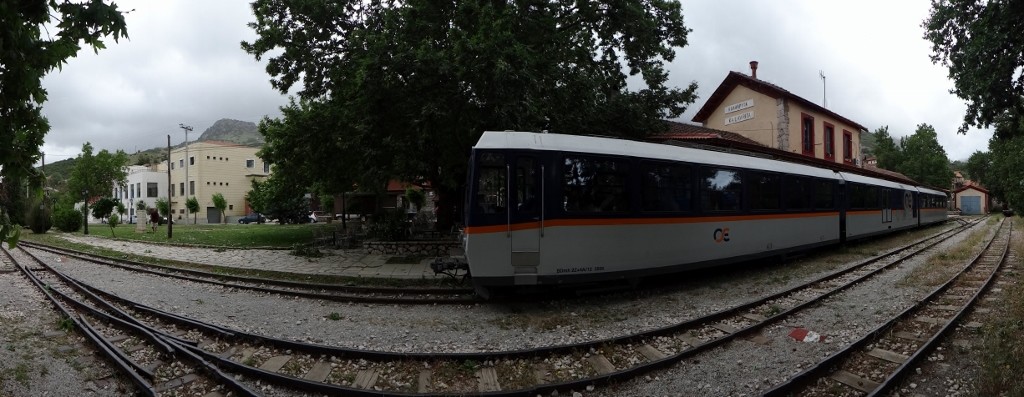 Eventually we arrived in Kalavrita, a small town set in the hills below Mount Helmos. The winter ski resort up the road meant shop windows full of discounted skis and snowboards, a strange sight after the sweltering temperatures we’ve had over the last few days. That said it was cooler up in the hills and I was glad I had thought to bring my fleece; fortunately we didn’t need the umbrella I’d packed as the very light rain soon petered out.
Eventually we arrived in Kalavrita, a small town set in the hills below Mount Helmos. The winter ski resort up the road meant shop windows full of discounted skis and snowboards, a strange sight after the sweltering temperatures we’ve had over the last few days. That said it was cooler up in the hills and I was glad I had thought to bring my fleece; fortunately we didn’t need the umbrella I’d packed as the very light rain soon petered out.
Kalavrita has always been known for its beauty and because, in 1821 Yermanos, Archbisop of Patra, raised the flag to signal the War of Independence just a few kilometres away. But it is the brutal reprisal massacre which took place during World War II which sadly now makes the town stand out from others around here. When 81 Germans soldiers were taken prisoner and later executed by the Greek Resistance, the frustrated Nazis decided to take it out on the town of Kalavrita and its surrounding villages. After sacking the local villages and killing their inhabitants they arrived in the town. On 13 December 1943 they called all the townsfolk to the local school, here the women and children were locked into the school while the men and boys aged over 13 were taken to Kapis’ field and made them watch as they burned the city house by house. Then they opened fire with machine guns. When the shooting stopped they walked around and shot anyone who was still living. In Kalavrita alone 696 people were killed, in total over 1436 men and boys died.

A shrine to those killed has a little lamp for each of them hanging from the ceiling – there are too many lamps.
The women and children who were locked in the schoolhouse watched their village burn around them, but managed to escape by breaking down the doors of the school, before it too was burned to the ground. The women looked for their men. Some said they had been put in box cars and taken away on the train, some said they heard they were locked up somewhere but it wasn’t until late afternoon when they found them in the field. The German soldiers went on to burn down the monastery where the flag had been raised, leaving the women to bury their dead. It’s impossible to imagine the pain the women must have felt when they came to the field and found the bodies of their husbands, friends, neighbours, fathers and children – I tried to imagine what it would have been like if this had happened in the village I grew up in, but it was too painful.

The rebuilt church has the pillars of the old church in it, stopping a couple of feet short of the roof.
In the town is a memorial to those who died as well a museum in the reconstructed school. The last image you see as you leave the museum (before you enter the obligatory souvenir shop of course) is a huge wall with the faces of the men and boys who lost their lives. It was all so moving, and when I reached the open air I had to hold back the tears in my eyes. Jay sat down and wept next to a statue of a woman and her children dragging their father’s dead body to a grave.
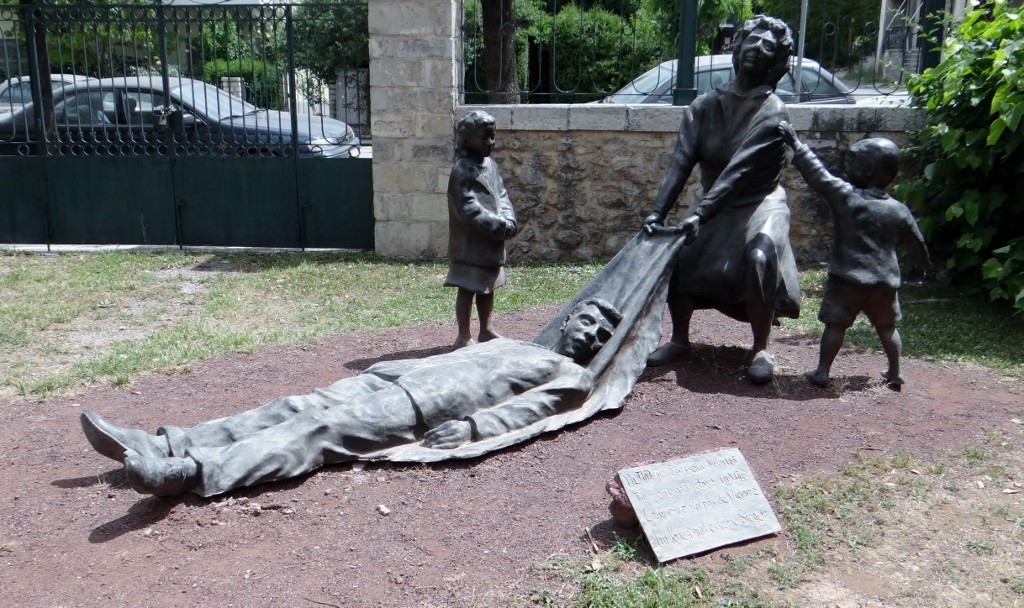 Tears wiped, noses blown and eyes all puffy and red we walked along the street next to the school which is lined with cafes and souvenir shops – we really weren’t in the mood to buy pasta shapes or honey. But the strange thing is that you could have a lovely train journey up here and spend a day wandering around the town and almost be unaware of its past – that would be so much easier, but a real shame.
Tears wiped, noses blown and eyes all puffy and red we walked along the street next to the school which is lined with cafes and souvenir shops – we really weren’t in the mood to buy pasta shapes or honey. But the strange thing is that you could have a lovely train journey up here and spend a day wandering around the town and almost be unaware of its past – that would be so much easier, but a real shame.
When the train arrived to make our way back down the gorge the four of us jumped into the front carriage and bagsied the best seats (front, left – in case you’re ever doing the trip). Now we had a Dave windscreen style panorama view and to make it even better Dhasos the driver invited me to sit in the pull down jump seat in the cab beside him. As he drove along he pointed out things to see, waterfalls, caves, a monastery perched on a cliff face, his view in his rear view mirror – it was like having my own tour guide. At one point he even stood up, walked over to my side of the cab, opened the window and pointed out at the space a waterfall was about to fill!
The four of us took it in turns in the jump seat, but I was lucky enough to be there as we passed through the best part (in my opinion), with tunnels and overhangs. Clinging to the rocks a group of people walking up the track were waved out of the way so we could get through, but it was smiles and waves and cheery laughter all the way – a truly wonderful experience.
Back in Dhiakofto we were all famished so Stan and Fiona took us to a little souvlaki place they had eaten at the previous night. Over chicken kebabs, chips and salad we chatted – they spend a few months each year in Greece and we were jealous, but they dream of touring in a motorhome – so it was great for us all to chat and discuss all things and types of travel. After lunch we said farewell to our travel companions for the day, but we hope to see them again soon as they often pop in to visit relatives in England not too far from our home.
After a full day, and restless night, the last thing I wanted to do was go anywhere but we’ve still so much of Greece to see so off we went. We drove along the coast road to Patra and after a couple of loops to find the entrance, we crossed the Rio – Antirrio bridge. Wikipedia tells me it is the world’s longest multi-span cable-stayed bridge, but there is some dispute about this as the Millau viaduct in France is longer, but has some extra sort of supports – either way it’s a flipping long bridge at almost 1.8 miles and all the more impressive when you learn that it has had to be built to deal with earthquakes and possible tsunamis as the region is seismically volatile. But no matter how impressive it is, I’m not sure it was worth the €13.40 charge to cross it – and luckily this time we were graded as a car, it would be closer to €20 if the attendant had decided we were a small lorry like the last one we coughed up at. Scrabbling around for the last of our change we scraped together enough to pay and followed the road to Nafpaktos.
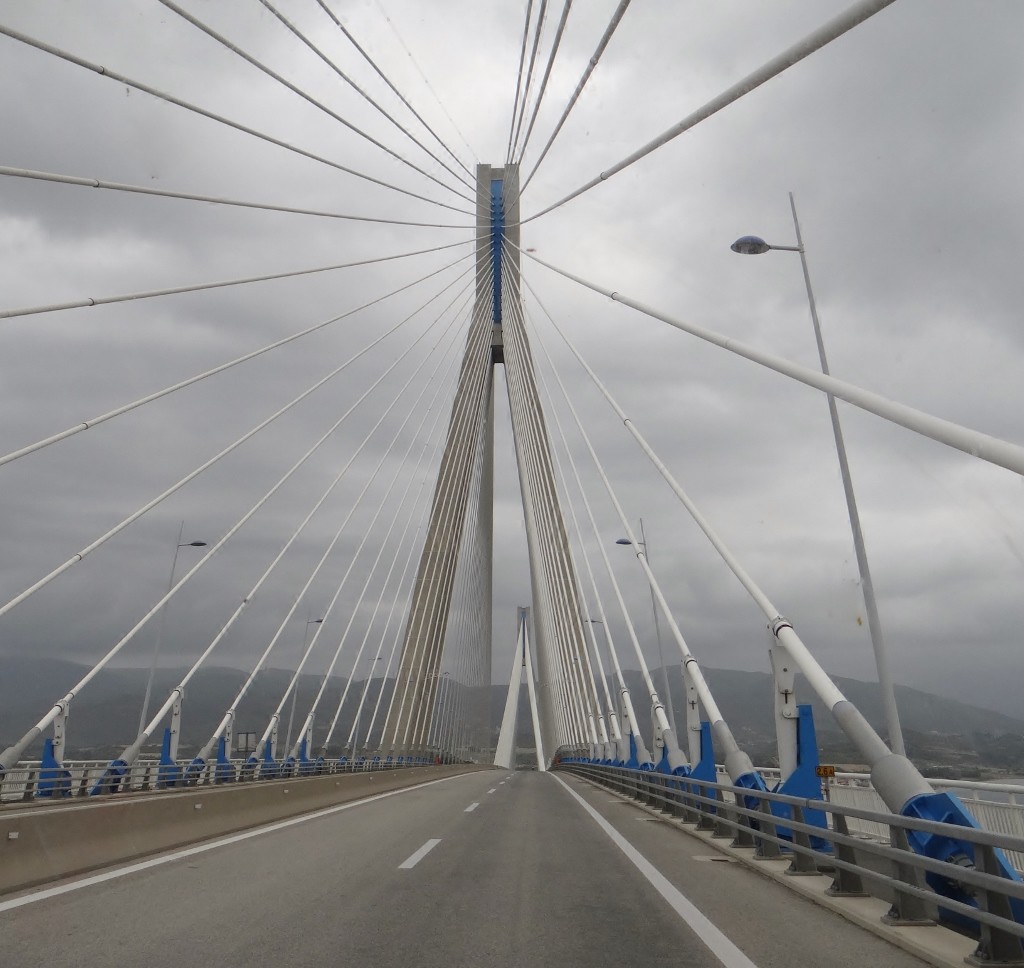 We parked up by the beach and I pulled down Dave’s bed and had a well deserved 40 winks as Jay and Charlie explored the town. The sun is setting and it’s time to cook up some grub, sink some wine and have a look at the maps. I loved The Peloponnese, the rest of Greece has a lot to live up to.
We parked up by the beach and I pulled down Dave’s bed and had a well deserved 40 winks as Jay and Charlie explored the town. The sun is setting and it’s time to cook up some grub, sink some wine and have a look at the maps. I loved The Peloponnese, the rest of Greece has a lot to live up to.
Ju x

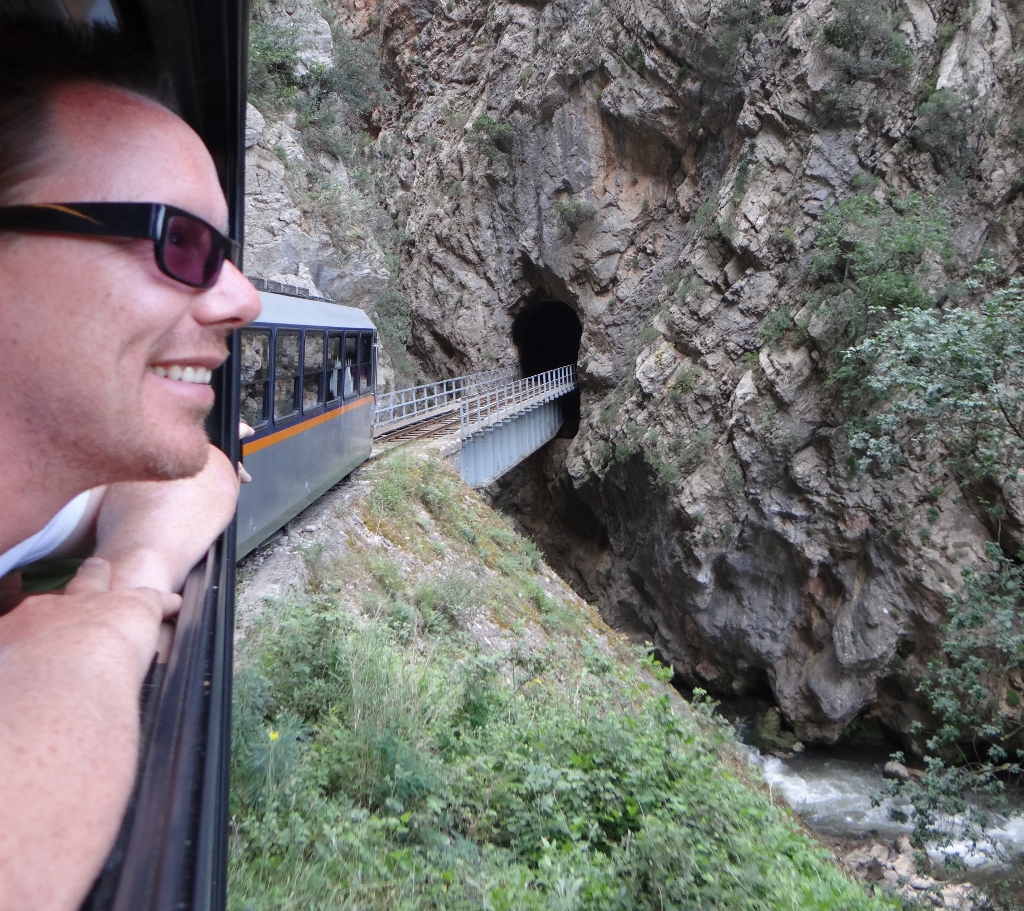
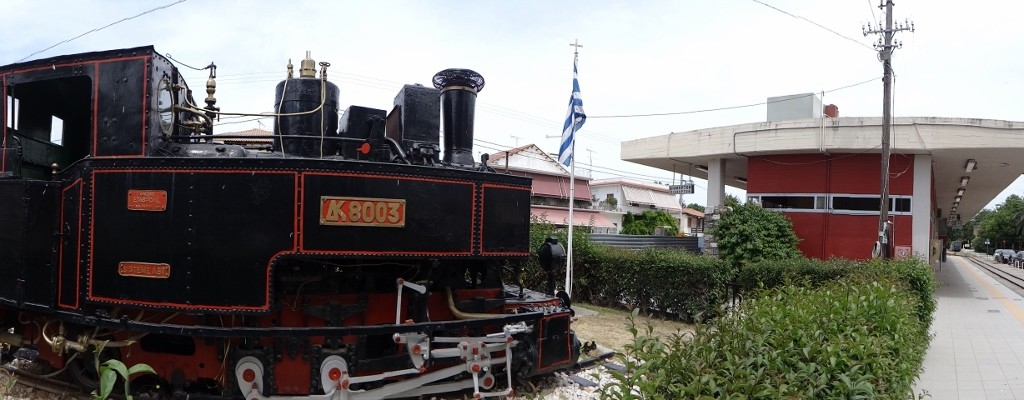
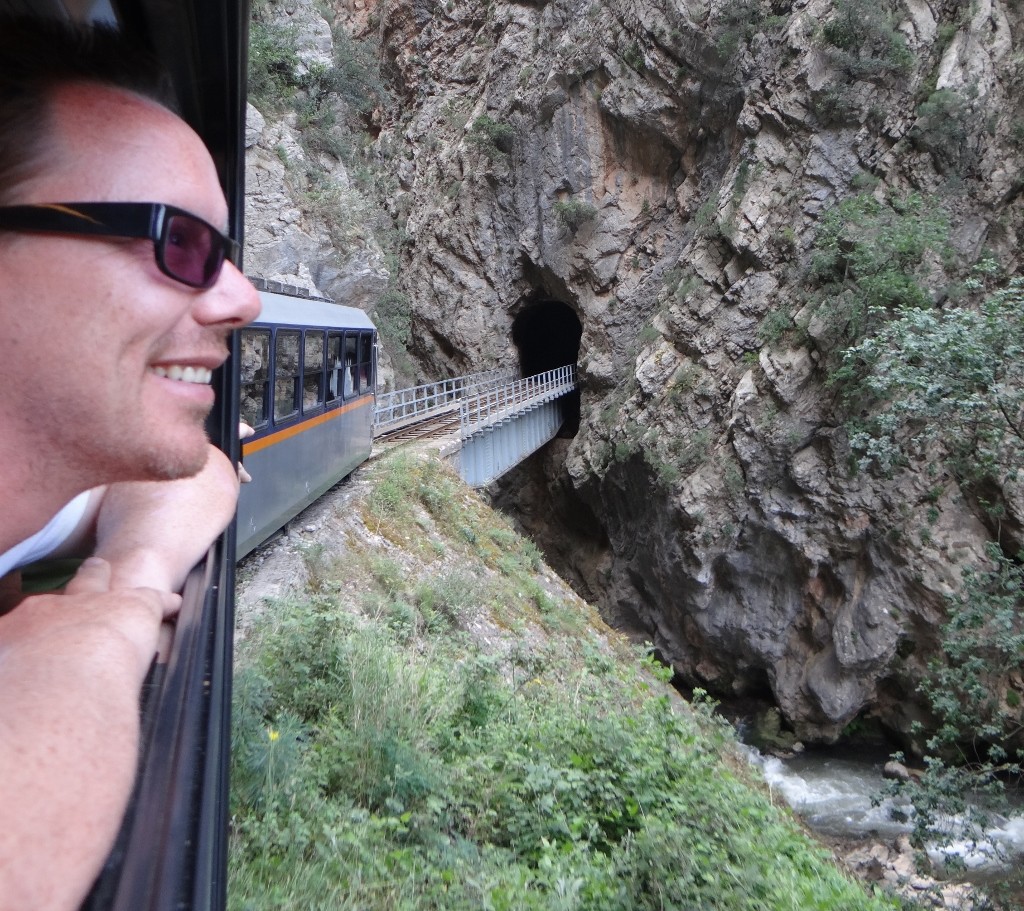
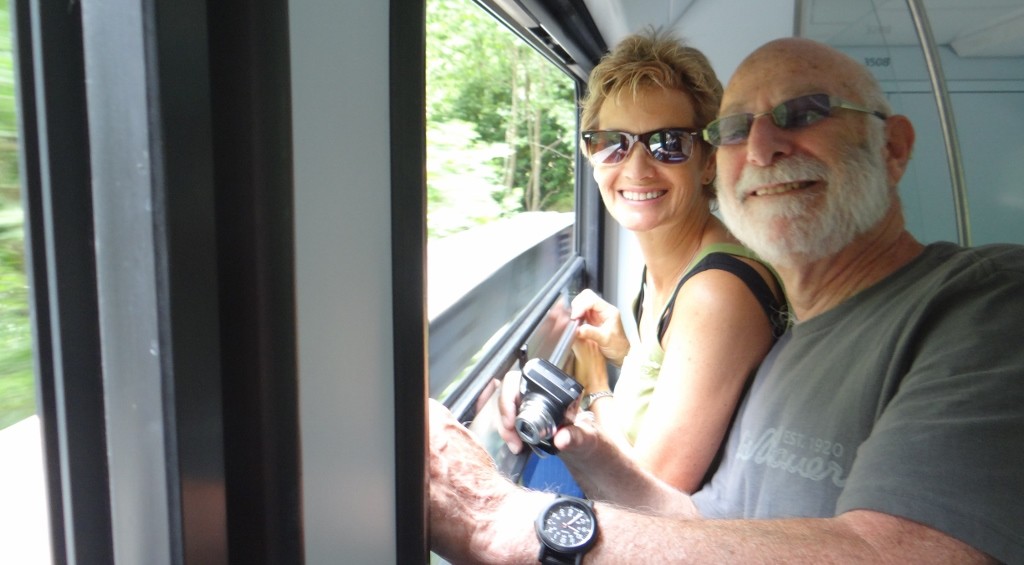
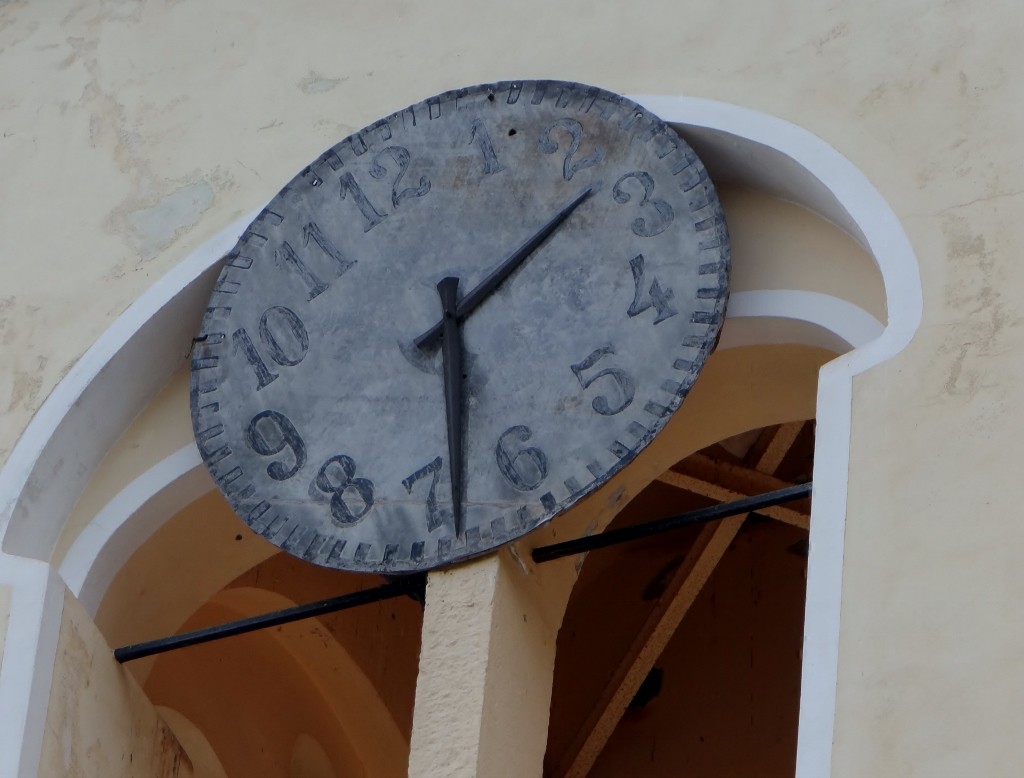
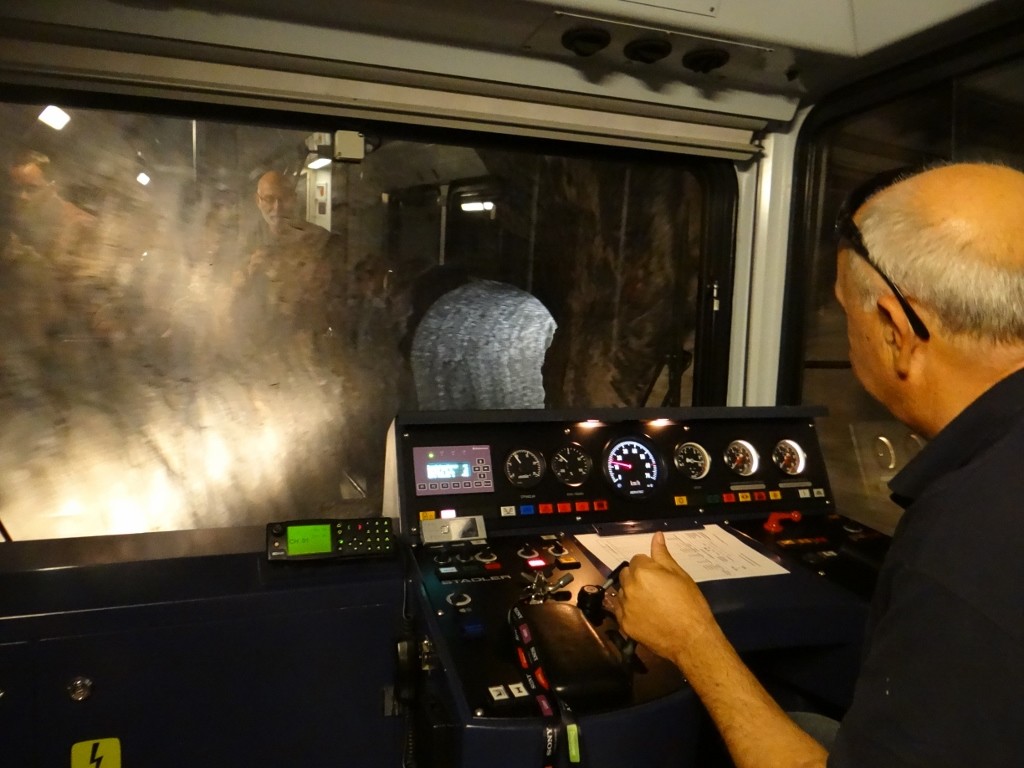
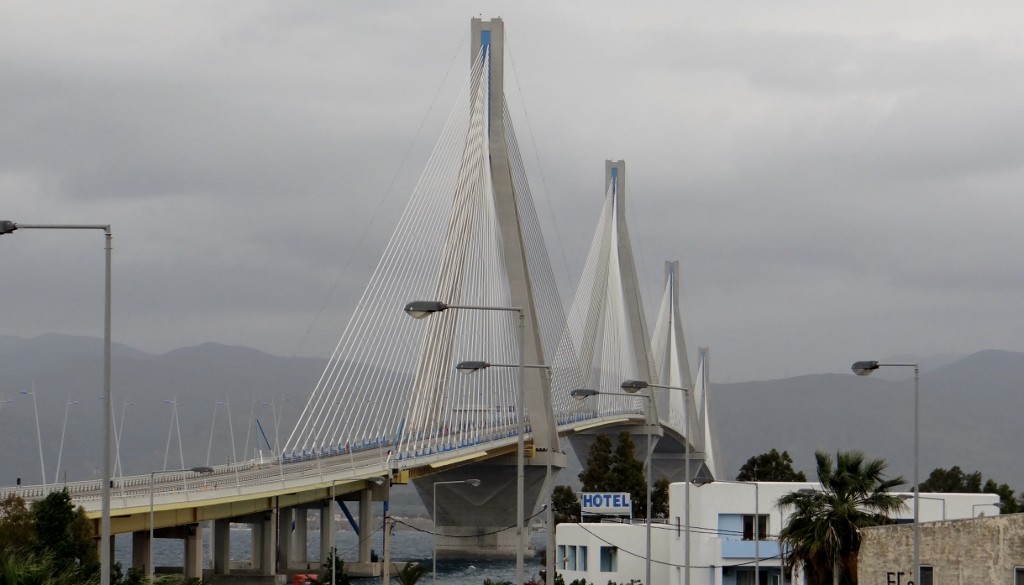

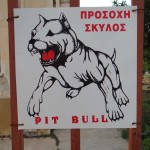
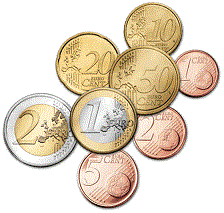
Hi guys good to see you enjoyed the railway but think you are both really spawny getting a ride in the drivers cab.
Great blog, will follow with great interest !
Enjoyed your company the other night! We get the boat at Patras Friday 6pm!
Bon Voyage :-)